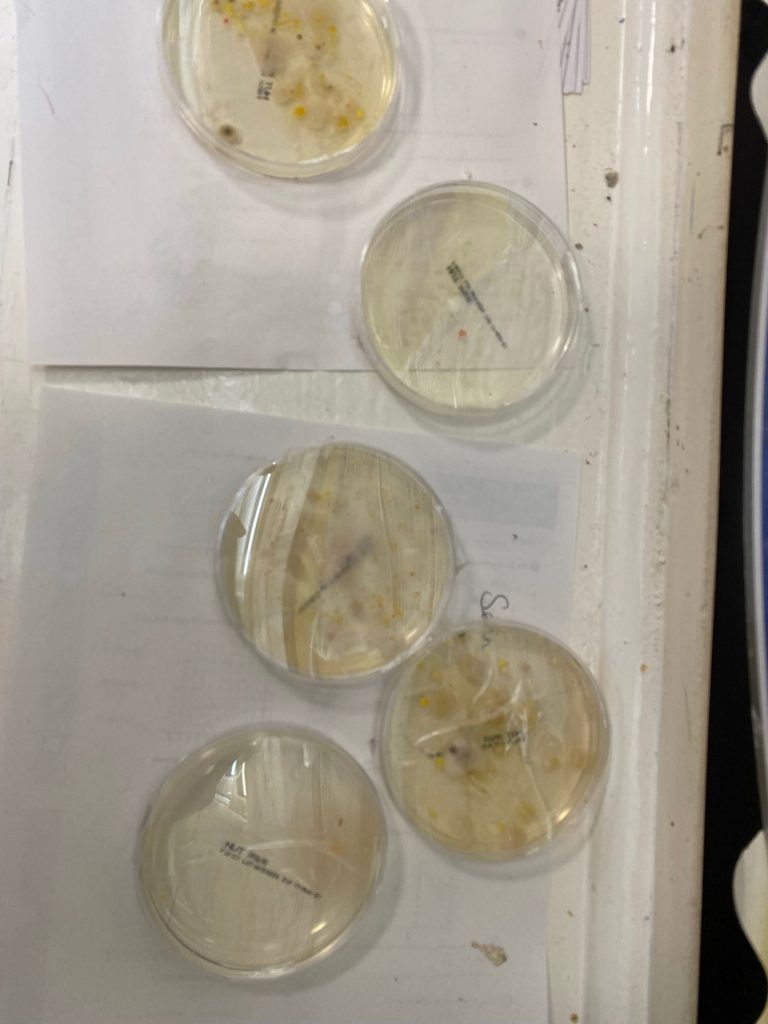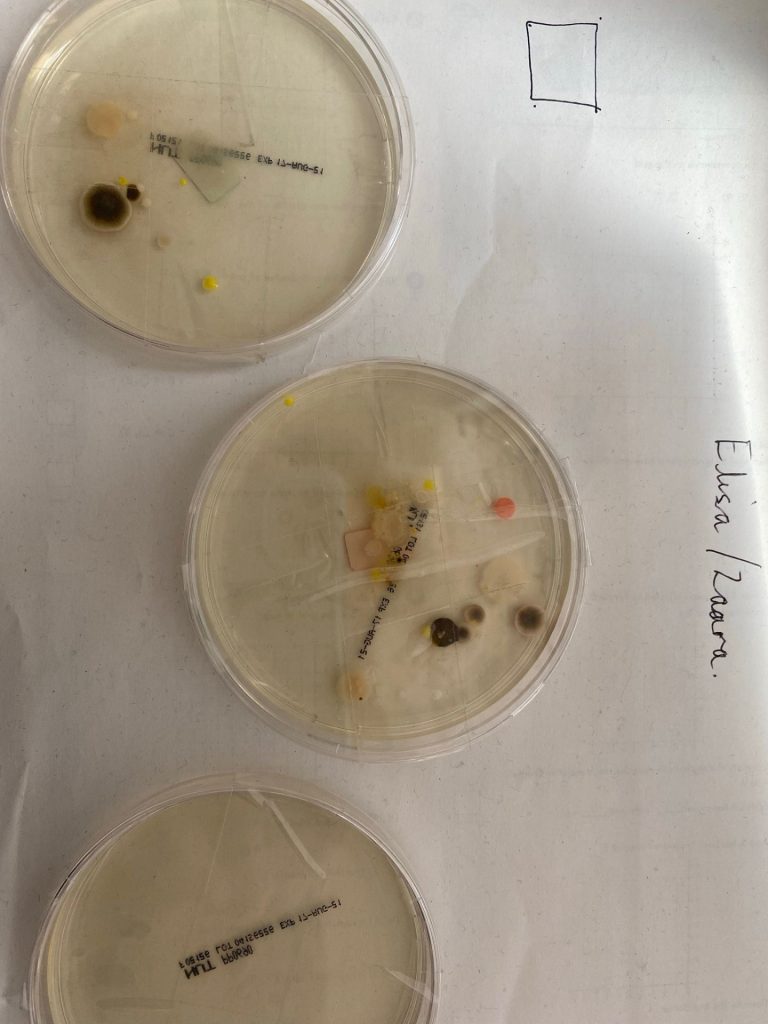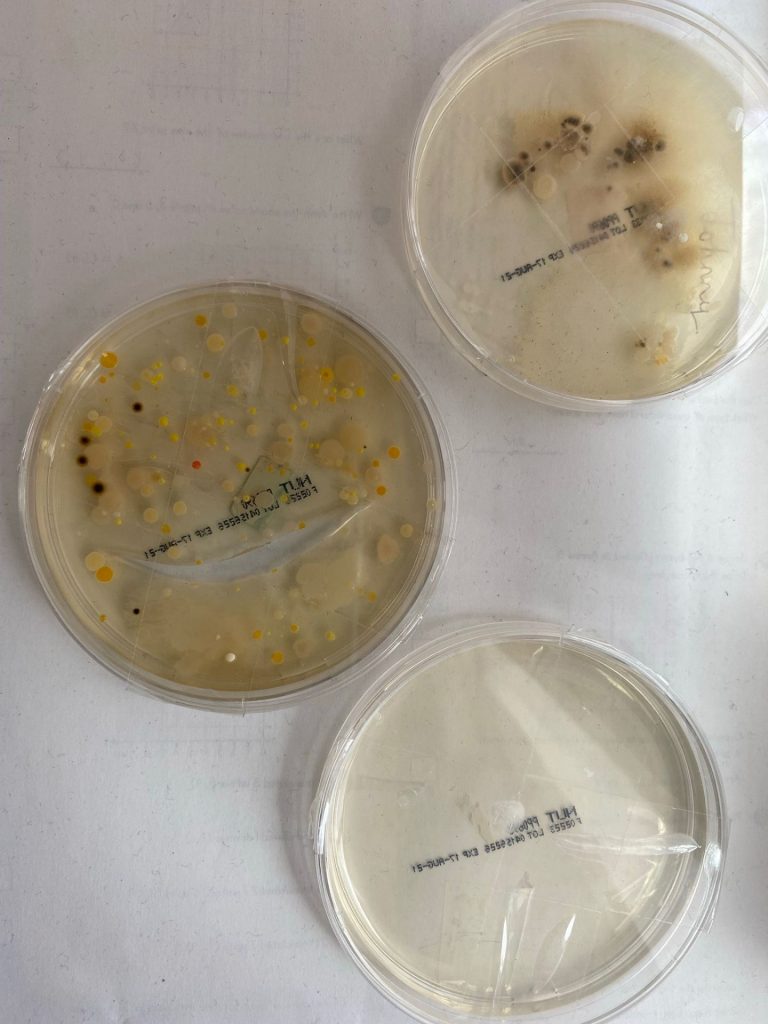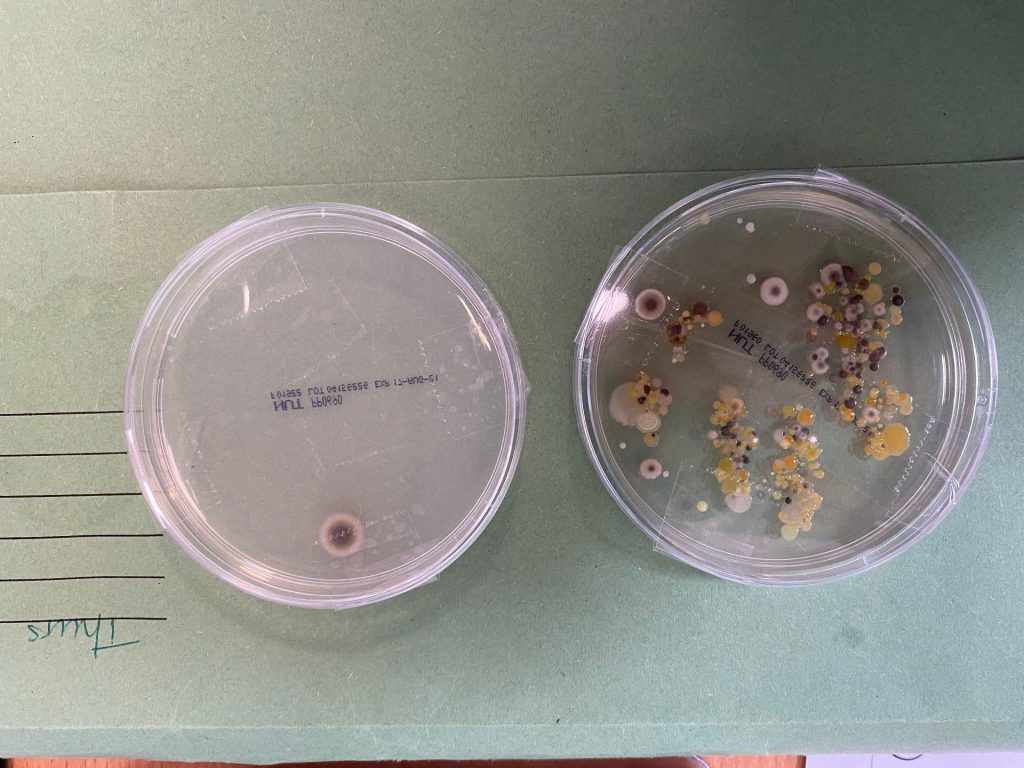30th June
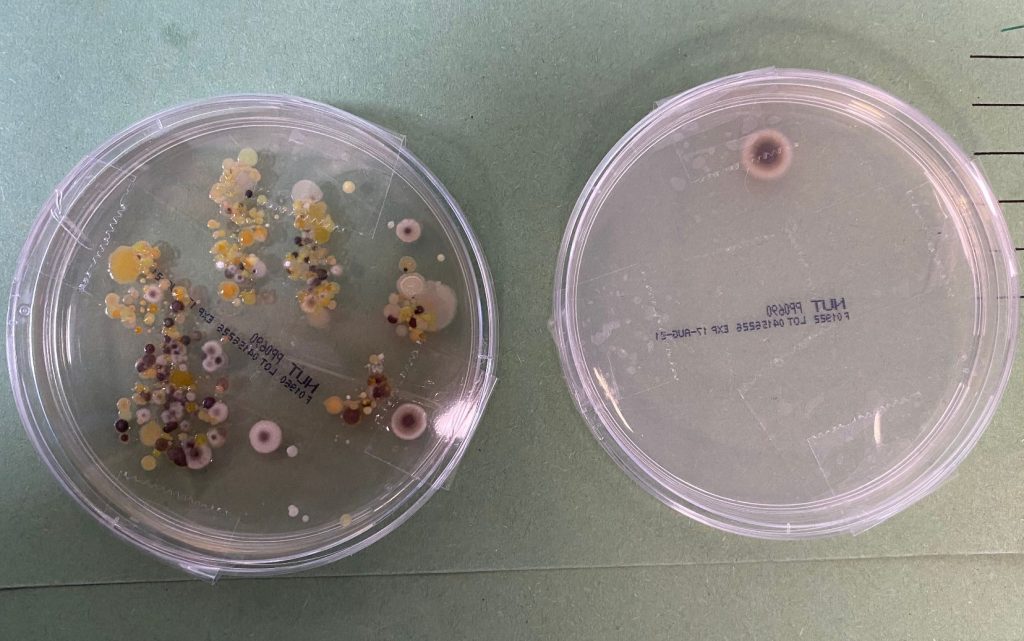
Classroom Activity
For this activity, we sent pre-made nutrient agar petri dishes to the school. Teachers instructed the children to touch their hand to the first plate, then clean their hands with alcohol-based hand sanitiser before touching to a second plate. Some plates remained closed as negative controls. Children were asked to make predictions on what they would see on the different plates. The plates were sealed with tape, and allowed to incubate in the classroom at room temperature for about a week. Every few days, the children recorded observations about the growth on their plates.
The microbiology and education experts then joined the class via Teams a few days into the incubation to assess their learning, help explain their observations, and answer their questions. A few days after that (~1 week into the incubation), the experts went to the school for a in person visit and got to see their plates up close and further discuss what they learned.
Reflections
This was definitely the most engaging activity we did with the children in terms of getting them excited and really thinking about microbes. The fact that the experiment was going on for a whole week where they could watch so much diversity of new colours and textures appear on the plates was really exciting to them and sparked loads of questions. I think it also gave them time to think and develop their questions, which could be one simple element that is lacking in primary school science education.
There were many questions of the vein: “this colony/microbe looks like….. what is it?” I would try to give them my best guess, but the funny part is that none of them seemed to care about the answer! I’m not really sure why they were so disinterested in the answer… Indeed, I was throwing out scientific genera names, like Staphylococcus and Micrococcus, which aren’t the least bit catchy. Admittedly, I did struggle to give them context for a bacterial genus, while avoiding overemphasising pathogens, which could explain the blank looks. By far their favourites were any growths that were large, hairy, furry, and/or bumpy – many of them most likely fungi. The advantage of their focus on these was that the fungi are certainly not directly harmful, so I could better emphasise the notion of ‘friendly skin microbes’.
When I visited in person a few days later, and got to see the plates better, I was able to adjust my approach to their questions. They’d again ask me what is this colony/microbe- I’d either give a best guess or say we can’t be sure from looks alone, and then immediately point out all the other diverse colonies they had on their plate and tell them that meant they had a healthy skin microbiome. They seemed to be more satisfied with that response! This also gave me the opportunity to talk to them a little bit more about the beneficial aspects of the skin and gut microbiomes.
Some students who did the test of hand sanitiser vs uncleaned hand were able to articulate their observations and an explanation very well! As I suspected, they saw less growth/fewer colonies on the plate touched by the alcohol-sanitised hand, but they still saw some colonies! One student cleverly pointed out it says on the hand-sanitiser bottle that it’s “only 99% effective”.
This gave further opportunity to discuss the difference between how alcohol and soap works for hand hygiene. Their responses to this as well as their clear understanding of the observations about the hand sanitiser plate suggested that the science, or at least the importance, of hand hygiene was already pretty familiar to most of them. Makes sense a year into the hand-washing manifesto sparked by the pandemic.
If I could do this activity again with the same age group or older, I would turn the emphasis more about human microbiome and less about hand hygiene. For 2 reasons: 1) they were already familiar with (if not exhausted by) hand hygiene and 2) the idea of diverse friendly microbes living on their skin seemed to spark more imagination and enquiry.
I was really impressed with the thought-process starting to spring up in some of the children about “How do you detect and get rid of ‘harmful’ microbes while keeping the good ones?” They didn’t ask it that way or that directly, but the questions from some of them suggested that they were starting to piece this together as an issue. Indeed, this very question is one of the emerging challenges in modern microbiology! Getting them to independently identify this would be a great success towards our overarching goal of enquiry-based learning and giving them a taste of what real-life science is about – asking questions and trying to answer them with research.
Some notable questions from the children specifically related to the petri dish activity:
- How come I can see microbes when they are growing on the plate but I can’t see them growing on my skin?
- Why do I have microbes on the control plate?
- Does it mean we made a mistake if there are microbes on the control plate?
- Can the microbes grow on top of each other?
- How do you know which microbes growing on the petri dish are harmful?
- How do you kill/get rid of microbes?
- How do you get rid of the petri dishes?
- Why can’t we open the petri dishes if most of the bacteria on it aren’t harmful

